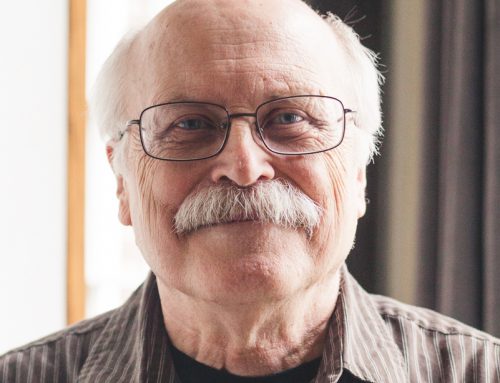Ever since as a child I saw Charlton Heston play Moses in The Ten Commandments, I have loved the story of the Exodus. The profound yet tentative faith of the humbled Moses, along with the tenacity and inconstancy of the Israelites struck me. Mostly, I was drawn to the idea that God was directing history on a national and on a personal level for these people. Since then, I have come to see that it was God’s plan to tell the gospel story of redemption in a real-time allegory: through Israel’s experience with Egypt and the symbolism of the Passover.
The people of Israel were enslaved and terribly oppressed by the Egyptians. They were not free to go elsewhere. For generations, they had served the Egyptians because they had no choice. They wanted to be free, yet freedom was out of their reach. They could do nothing to change their status. Thus, they cried out to God day and night for deliverance.
At long last, God sent His deliverer in the man Moses. Yet, the deliverance God had planned was to occur in stages. God asked His people to believe His promise, to believe that He would deliver them, even when their workload increased as a result of Moses’ entreaties to Pharaoh. After each plague, Pharaoh agreed to free the slaves and then went back on his word. It had been a long road full of tears and bitter hardship for Israel, and they longed for their freedom. I imagine they wondered at times if it would ever come.
At long last, the final plague was upon them. This time, God would strike down the firstborn of every Egyptian family, including its livestock, after which Pharaoh would drive the people of Israel out of the land. In preparation for this tenth and final plague, Moses instructed the people to observe the first Passover. The people were to practice it as a “permanent ordinance” for all subsequent generations. They were never to risk forgetting the incredible deliverance God was about to perform.
The instructions were specific. They were told to bring a choice lamb into their individual homes for two weeks, after which time they were to slaughter the lamb and roast it over an open fire. They were to mark their doorposts with the lamb’s blood so that the angel of death would “pass over” their homes and spare the firstborn residing there. Furthermore, the Israelites were to eat the roasted lamb with bitter herbs to symbolize their slavery and with unleavened bread to symbolize their haste. They were to be ready to flee as they ate this meal, eating with their shoes on and their bags packed.
Some four thousand years later, the Jewish people (and some Christians) still observe Passover. The Passover meal, called the ‘seder’ (Hebrew for ‘order’), is full of pictures that not only keep alive the memory of God’s delivering the Israelites from Egypt but also strikingly foreshadow the events surrounding Jesus’ sacrifice. The seder plate contains essential symbolic elements of the Passover celebration, and the leader (usually the father) recounts their meaning throughout the meal. In addition, four cups of wine raised during the meal stand for the four “I wills”–God’s promises recorded in Exodus 6:6-7:
“Say, therefore, to the sons of Israel, ‘I am the Lord, and I will bring you out from under the burdens of the Egyptians, and I will deliver you from their bondage. I will also redeem you with an outstretched arm and with great judgments. Then I will take you for My people, and I will be your God; and you shall know that I am the Lord your God, who brought you out from under the burdens of the Egyptians.'”
The seder follows a traditional order, which can vary except for certain central elements. Participants drink the ‘Cup of Sanctification’, marking God’s first promise: “I will bring you out from under the burdens of the Egyptians.” Next, they dip parsley in salt water and eat it to “taste” the tears shed in slavery in Egypt. A piece of unleavened bread (‘matzo’) is broken in two, and one piece is hidden for later. Then the participants scoop bitter herbs (often horseradish) onto a piece of matzo and eat it to “taste” the bitterness of the life of slavery. They dip another piece of matzo into the bitter herbs, but this time before they eat it, they dip it in ‘kharoset’, a delightfully sweet mixture of chopped apples, honey, nuts, and wine that signifies the sweet taste of the promised redemption and freedom that awaits the people.
At this stage of the seder, the story of the Exodus and the first Passover is told, after which participants drink the ‘Cup of Plagues’ to mark God’s second promise: “I will deliver you from their bondage.” A shankbone is held up to remember the Passover Lamb and the blood which marked the doorposts of the houses of Israel. Then the festival meal is served–a leisurely meal unlike the first Passover eaten in haste. Afterwards, the hidden piece of matzo (the ‘afikomen’), now found, is broken. It substitutes for the Paschal Lamb, which in days of old was the final food of the seder feast. This is thought to be the bread Jesus broke during the Last Supper, when He said, “This is my body, which is given for you” (Luke 22:19).
Next, the ‘Cup of Redemption’ is raised to mark God’s third promise: “I will redeem you with an outstretched arm.” Likely, this is the cup Jesus raised when He said, “This cup which is poured out for you is the new covenant in My blood” (Luke 22:20).
The participants complete the seder with the ‘Cup of Praise’ to remember God’s fourth promise: “I will take you to Me for a people.” And finally they shout the now traditional toast, “Next Year in Jerusalem!”, reflecting the longing of the displaced people of Israel for their homeland.
The story of the Passover as it has been preserved in the seder observance memorializes God’s deliverance of Israel from slavery in Egypt. But clearly, God also intended it to foreshadow His greater deliverance: the sacrifice of Jesus for our deliverance from slavery to sin. When Jesus observed the Passover with His disciples, he re-interpreted the centuries-old elements of the seder meal to make a revolutionary claim. Whereas the Passover celebration had always served to remember the Exodus as the pinnacle of God’s great deliverance, Jesus told His disciples that in future Passovers they were to remember Him; they were to tell His story (which was unfolding before their eyes) as a memorial to God’s greatest deliverance.
While Jesus was talking to them, the disciples did not yet understand that the Lamb of God would be cruelly sacrificed only hours later; the plan of redemption, illustrated in the Passover, was not yet clear to their confused minds. Three days later, however, God’s promise was substantiated when word spread that Jesus had risen from the dead. The resurrection is evidence that our final deliverance will come to pass.
The pictures in God’s real-time allegory are many. Like the Israelites’ enslavement in Egypt, we are enslaved to sin. Our slavery is thorough and oppressive. In this life before the Kingdom, we are “locked in” to being sinners. We recognize that we can do nothing to improve our moral capacity, and we struggle under the weight of our own failure. We cry out to God to deliver us. Indeed, this is just what the gospel promises: our eventual freedom from slavery to sin, when we will receive new hearts that will love from the inside out.
The Passover story is not only a legacy to Jews; it is a legacy to Christians as well. By faith, their ancestors are ours also, and therefore their practices can have deep meaning for us as well. The Passover is a moving and poignant portrait of our own lives of faith: oppressed by the bitterness of our sin, we wait and long for the Kingdom where we will finally be set free and God’s promise of deliverance in Jesus will be complete.
The Israelites in Egypt and the disciples of Jesus did not have the benefit of the historical accounts of the extraordinary events unfolding in their lifetimes. I imagine those were confusing times, even for the faithful. They very likely questioned what God had in mind and just what was unfolding before them. In our own lives, we do not get to see ahead. Instead, we must trust and wait, believing that God will make good on His promise, even when the whole world seems to be running headlong after evil.






